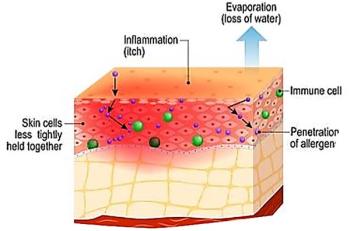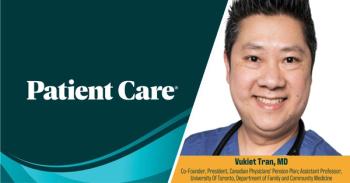
Nursing Tops List for Work-Related Asthma
BARCELONA, Spain -- Nurses develop occupational asthma at a rate that is more than double that of the general population, investigators in a multinational study have found.
BARCELONA, Spain, July 27 -- Nurses develop occupational asthma at a rate that is more than double that of the general population, investigators in a multinational study have found.
Nurses had a relative risk of 2.2 (P=0.007) for occupationally acquired asthma, according to a report in the July 28 issue of The Lancet, trailing only printers (RR=2.37) among occupations represented in the study.
However, only nursing had a statistically significant increased risk, said Manolis Kogevinas, M.D., Ph.D., of Barcelona's Municipal Institute of Medical Research.
The reasons for nurses' high prevalence of occupationally acquired asthma remain unclear. Increased use of latex gloves is one possibility, Dr. Kogevinas and colleagues noted, although the latex content in gloves has decreased substantially in response to concerns about hypersensitivity.
"Nurses could be exposed to sensitizing substances, respiratory allergens, and irritants including sterilizers and disinfectants such as glutaraldehyde or bleach," they also suggested.
The international team of investigators prospectively studied 6,837 people who previously had participated in the European Community Respiratory Health Survey (ECRHS) of 1990-1995 and had reported no respiratory symptoms or history of asthma at the time.
Asthma status was determined by methacholine challenge (N=4,438) and by asthma-related questionnaire data.
Occupational exposures were evaluated using a list of occupations thought to be associated with an increased risk of asthma, an asthma-specific job-exposure matrix (including 18 supposedly high-risk substances) supplemented by expert assessment, and participants' reports of inhalation incidents.
Participants' occupational history included all jobs held for at least three months in the years between the initial survey and the current study.
The proportion of study participants who had had an asthma attack within the preceding 12 months was 3.1% among those who worked in high-risk occupations (N=1,181) versus 1.8% among those in low-risk jobs (reference group, N=4,143). The difference translated into a relative risk of 1.69 for high-risk occupations.
Use of the job-exposure matrix yielded similar results, as asthma attacks occurred in 3% of individuals reporting occupational exposures and 1.7% of those with no exposures.
The rate of asthma accompanied by bronchial hyperreactivity was more than twice as high in people with high-risk occupations (2% vs 0.8%, RR=2.55). Assessment by the job-exposure matrix yielded a rate of 2% versus 0.7% for individuals with no exposures (RR=2.40).
When asthma cases were grouped by occupation, nurses had the highest rate (4.8%), followed by woodworking (3.9%, RR=2.22), printing (3.6%, RR=2.37), cleaning and caretaking (3.4%, RR=1.71), agriculture and forestry (3.1%, RR=1.85), and electrical processors (2.6%, RR=1.56).
By comparison, only 1.8% of the reference group had had asthma attacks within the previous 12 months.
Only nursing's asthma rate was associated with statistical confidence intervals that did not include 1.0.
Analysis by type of exposure showed an asthma rate of 3.7% in association with high molecular-weight substances, 3.0% for low molecular-weight substances, and 2.4% for mixed exposures.
The population attributable asthma risk for occupational exposures ranged from 10% to 25%.
"Our data suggest that exposure to substances in the workplace causes more than 10% of all cases of adult-onset asthma," the authors concluded.
The findings also indicate that the frequency of occupationally acquired asthma is systematically underestimated, as compared with estimates derived from traditional surveillance systems, the authors added.
They called for closer monitoring of workers after inhalation accidents and increased efforts toward early identification of workers with symptoms suggestive of asthma.
Newsletter
Enhance your clinical practice with the Patient Care newsletter, offering the latest evidence-based guidelines, diagnostic insights, and treatment strategies for primary care physicians.































































































































































































































































































































